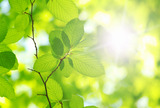
This resource is a video abstract of a research paper created by Research Square on behalf of its authors. It provides a synopsis that's easy to understand, and can be used to introduce the topics it covers to students, researchers, and the general public. The video's transcript is also provided in full, with a portion provided below for preview:
"Mosquito-borne illness kills more than 700,000 people per year. Often these pathogens reside in the mosquito gut, where they may be impacted by their diet and gut microbiome. But there are gaps in the research into these impacts. Specifically, most studies into mosquito sugar metabolism focused on blood diets, but only female mosquitos drink blood, while both sexes eat plant sugars like nectar and sap. Similarly, most mosquito microbiome research focused on bacteria, largely missing the potential role of gut fungi, or the mycobiome. To narrow these gaps, researchers examined fructose metabolism in Asian tiger mosquitoes using 13C-metabolomics and stable isotope probing. While female and male mosquitos had distinct metabolic pathways, the active fungal groups in both sexes after fructose ingestion had a mix of competitive and synergistic interactions. There was also evidence of cross-feeding interactions, where one microbial species produces metabolites that other microbes use..."
The rest of the transcript, along with a link to the research itself, is available on the resource itself.
- Subject:
- Biology
- Life Science
- Material Type:
- Diagram/Illustration
- Reading
- Provider:
- Research Square
- Provider Set:
- Video Bytes
- Date Added:
- 04/14/2023
